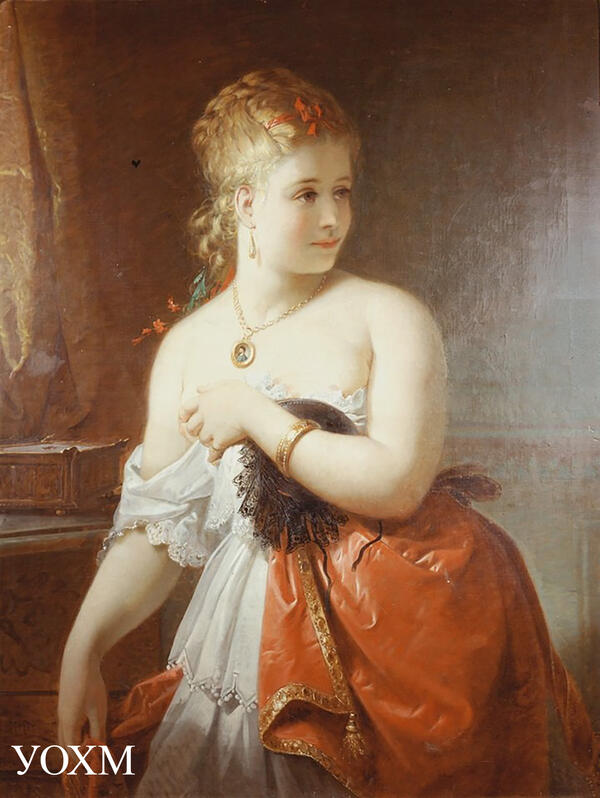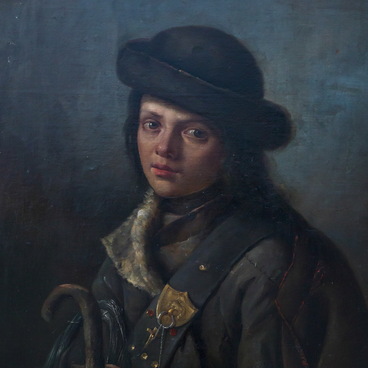The painting by the Austrian artist Franz Russ the Younger “After the Ball” is a classic example of salon art. The name of this movement derived from the French word “salon” meaning a “hall.” The halls hosted regular Parisian exhibitions of fine arts, organized by order of Louis XIV. The Paris Salon determined the popularity of artists and accepted the works that were performed only by the members of the Académie des Beaux-Arts — the rest exhibited their paintings on bridges and squares. The French Revolution with its slogan “liberty, equality, fraternity” changed this order, and from the late 18th century, participation in the Salons became open to all the artists. This greatly accelerated the development of the genre.
Salon art was characterized by eclecticism — a mixture of artistic styles. It addressed the tastes of a wide audience including the inexperienced one. The important characteristics of the salon art were the entertaining nature of the plot, the easiness of perception, the external effect of pictorial techniques and the pleasant manner of painting. Masters of salon art worked in all genres. The artists often used mythological and religious subjects as a pretext for depicting nudity, while a historical theme could be interpreted as a spectacular performance. In the genre of everyday scenes, anecdotes were preferred, and the portrait invariably idealized the model. Sentimental stories with erotic connotations enjoyed great success among the viewers.
The art of the Salon became one of the forerunners of the popular mass culture of the 20th century. Individual styles and original trends were accepted with great difficulty. In 1872, the jury of the Paris Salon compared the painting by Claude Monet “Impression. Sunrise”, which gave the name to a whole new Impressionist movement, with unpainted wallpaper.
In salon art, beauty was highly valued, and especially images of attractive young women.
The painting “After the Ball” emphasizes the youth and charm of the young woman by fine surroundings and details. The girl seemed to be accidentally seen by the artist, who captured both the fleetingness of the impression and the charm of her appearance. The delicate light tone of her countenance and her lower dress is complemented by the passionate bright red color of the upper dress. The image in the picture of Franz Russ the Younger is mysterious, elegant and filled with admiration for youth, which is shared by the viewer.
Salon art was characterized by eclecticism — a mixture of artistic styles. It addressed the tastes of a wide audience including the inexperienced one. The important characteristics of the salon art were the entertaining nature of the plot, the easiness of perception, the external effect of pictorial techniques and the pleasant manner of painting. Masters of salon art worked in all genres. The artists often used mythological and religious subjects as a pretext for depicting nudity, while a historical theme could be interpreted as a spectacular performance. In the genre of everyday scenes, anecdotes were preferred, and the portrait invariably idealized the model. Sentimental stories with erotic connotations enjoyed great success among the viewers.
The art of the Salon became one of the forerunners of the popular mass culture of the 20th century. Individual styles and original trends were accepted with great difficulty. In 1872, the jury of the Paris Salon compared the painting by Claude Monet “Impression. Sunrise”, which gave the name to a whole new Impressionist movement, with unpainted wallpaper.
In salon art, beauty was highly valued, and especially images of attractive young women.
The painting “After the Ball” emphasizes the youth and charm of the young woman by fine surroundings and details. The girl seemed to be accidentally seen by the artist, who captured both the fleetingness of the impression and the charm of her appearance. The delicate light tone of her countenance and her lower dress is complemented by the passionate bright red color of the upper dress. The image in the picture of Franz Russ the Younger is mysterious, elegant and filled with admiration for youth, which is shared by the viewer.



